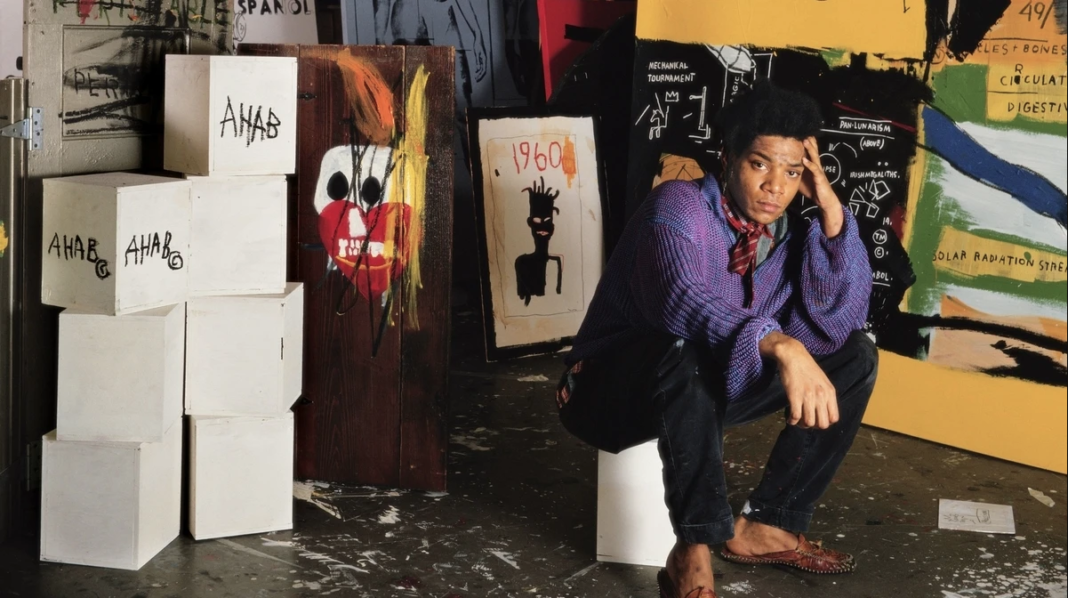JEAN MICHEL BASQUIAT
Brooklyn, New York, United States
1960 – 1988
“If you wanna talk about influence, man, then you’ve got to realize that influence is not influence. It’s simply someone’s idea going through my new mind.”
– Jean-Michel Basquiat
Jean-Michel Basquiat (b. 1960, New York – d. 1988, New York) is widely considered to be one of the most important artists of the late twentieth century. As a young adult, Basquiat experimented with street art and became well known by the moniker SAMO in the downtown art scene in New York City. In 1981, he was included in a groundbreaking exhibition at MoMA’s PS1 outpost in Long Island City, titled “New York/New Wave.” Throughout his brief and glamorous career, the artist explored issues of black identity in America, colonization and consumerism.
Jean-Michel Basquiat was an American artist who rose to success during the 1980s as part of the Neo-expressionism movement.
Wikipedia
Born: December 22, 1960, Brooklyn, New York, NY
Died: August 12, 1988, Great Jones Street, New York, NY
Periods: Contemporary art, Neo-expressionism, Primitivism
Buried: November 3, 1988, The Green-Wood Cemetery, New York, NY
Siblings: Lisane Basquiat, Jeanine Basquiat, Max Basquiat
Parents: Matilda Andrades, Gerard Basquiat
On view: UCCA Center for Contemporary Art
Jean-Michel Basquiat (b. 1960, New York – d. 1988, New York) is widely considered to be one of the most important artists of the late twentieth century. As a young adult, Basquiat experimented with street art and became well known by the moniker SAMO in the downtown art scene in New York City. In 1981, he was included in a groundbreaking exhibition at MoMA’s PS1 outpost in Long Island City, titled “New York/New Wave.” Throughout his brief and glamorous career, the artist explored issues of black identity in America, colonization and consumerism.
Jean-Michel Basquiat was an American artist who rose to success during the 1980s as part of the Neo-expressionism movement.
Jean-Michel Basquiat’s contributions to the history of art and his explorations of multifaceted cultural phenomena––including music, the Black experience, pop culture, Black American sports figures, literature, and other sources––will be showcased through immersive environments providing unique insight into the late artist’s creative life and his singular voice that propelled a social and cultural narrative that continues to this day.
Organized and curated by the family of Jean-Michel Basquiat, this exhibition of over 200 never-before-seen and rarely shown paintings, drawings, multimedia presentations, ephemera, and artifacts tell the story of Jean-Michel from an intimate perspective, intertwining his artistic endeavors with his personal life, influences, and the times in which he lived.
Jean-Michel Basquiat’s contributions to the history of art and his explorations of multifaceted cultural phenomena––including music, the Black experience, pop culture, Black American sports figures, literature, and other sources––will be showcased through immersive environments providing unique insight into the late artist’s creative life and his singular voice that propelled a social and cultural narrative that continues to this day.
Organized and curated by the family of Jean-Michel Basquiat, this exhibition of over 200 never-before-seen and rarely shown paintings, drawings, multimedia presentations, ephemera, and artifacts tell the story of Jean-Michel from an intimate perspective, intertwining his artistic endeavors with his personal life, influences, and the times in which he lived.
Who Was Jean-Michel Basquiat?
Jean-Michel Basquiat first attracted attention for his graffiti under the name “SAMO” in New York City. He sold sweatshirts and postcards featuring his artwork on the streets before his painting career took off. He collaborated with Andy Warhol in the mid-1980s, which resulted in a show of their work. Basquiat died on August 12, 1988, in New York City.
Early Life
Basquiat was born in Brooklyn, New York, on December 22, 1960. With a Haitian-American father and a Puerto Rican mother, Basquiat’s diverse cultural heritage was one of his many sources of inspiration.
He left home as a teenager to live in Lower Manhattan, playing in a noise band, painting, and supporting himself with odd jobs. In the late 1970s, he and Al Diaz became known for their graffiti, a series of cryptic statements, such as “Playing Art with Daddy’s Money” and “9 to 5 Clone,” tagged SAMO. In 1980, after a group of artists from the punk and graffiti underground held the “Times Square Show,” Basquiat’s paintings began to attract attention from the art world.
A self-taught artist, Basquiat began drawing at an early age on sheets of paper his father, an accountant, brought home from the office. As he delved deeper into his creative side, his mother strongly encouraged him to pursue his artistic talents.
Basquiat first attracted attention for his graffiti in New York City in the late 1970s, under the name “SAMO.” Working with a close friend, he tagged subway trains and Manhattan buildings with cryptic aphorisms.
In 1977 Basquiat quit high school a year before he was slated to graduate. To make ends meet, he sold sweatshirts and postcards featuring his artwork on the streets of his native New York.
In the 1981 article “The Radiant Child,” which helped catapult Basquiat to fame, critic Rene Ricard wrote, “We are no longer collecting art we are buying individuals. This is no piece by Samo. This is a piece of Samo.” This statement captures the market-driven ethos of the 1980s art boom that coincided with polarizing views played out in government and media, known as the culture wars. In this context, Basquiat was keenly aware of the racism frequently embedded in his reception, whether it took the form of positive or negative stereotypes. In his work, he integrated critique of an art world that both celebrated and tokenized him. Basquiat saw his own status in this small circle of collectors, dealers, and writers connected to an American history rife with exclusion, invisibility, and paternalism, and he often used his work to directly call out these injustices and hypocrisies.
Before his tragic death in 1988 at the age of twenty-seven, Basquiat expressed seemingly boundless creative energy, producing approximately a thousand paintings and two thousand drawings. Over the decades, the study of Basquiat’s paintings and drawings has offered textured insights of the 1980s and, importantly, continued reflections on Black experience against an American and global backdrop of the white supremacist legacy of slavery and colonialism. At the same time, Basquiat’s work celebrates histories of Black art, music, and poetry, as well as religious and everyday traditions of Black life.
Crown Motif
In his earlier works, Basquiat was known for using a crown motif, which was his way of celebrating Black people as majestic royalty or deeming them as saints.
Describing the crown itself in further detail, artist Francesco Clemente posited: “Jean-Michel’s crown has three peaks, for his three royal lineages: the poet, the musician, the great boxing champion. Jean measured his skill against all he deemed strong, without prejudice as to their taste or age.”
Paintings
Three years of struggle gave way to fame in 1980 when Basquiat’s work was featured in a group show. His work and style received critical acclaim for the fusion of words, symbols, stick figures, and animals. Soon, his paintings came to be adored by an art-loving public that had no problem paying as much as $50,000 for a Basquiat original.
His rise coincided with the emergence of a new art movement, Neo-Expressionism, ushering in a wave of new, young and experimental artists that included Julian Schnabel and Susan Rothenberg.
Many of Basquiat’s works have been likened to the improvisational and expansive compositions of jazz. Often themes accumulate through multiple references on the surface, emerging as patterns out of gestural brushstrokes, symbols, inventories, lists, and diagrams. Most images in Basquiat’s works have double and triple meanings, some of which the artist discussed and others that he left undefined, remaining open to viewers’ interpretations. Basquiat sought and enjoyed unlikely collisions of imagery and words, massive influxes of information and stimuli that recreated the experience of being in a world by turns exciting, inspiring, oppressive, and toxic.
Basquiat is a 1996 biopic/drama film directed by Julian Schnabel based on the life of American postmodernist/neo expressionist artist Jean-Michel Basquiat. Basquiat, born in Brooklyn, used his graffiti roots as a foundation to create collage-style paintings on canvas. Jeffrey Wright portrays Basquiat, and David Bowie plays Basquiat’s friend and mentor Andy Warhol. Additional cast members include Gary Oldman as a thinly-disguised Schnabel, Michael Wincott as the poet and art critic Rene Ricard; Dennis Hopper as Bruno Bischofberger; Parker Posey as gallery owner Mary Boone; and Claire Forlani, Courtney Love, Tatum O’Neal and Benicio del Toro in supporting roles as “composite characters”.
Jean-Michel Basquiat Documentary on Youtube
The Radiant Child
Director: Tamra Davis
2010
1 hr 33 min
A thoughtful portrait of a renowned artist, this documentary shines the spotlight on New York City painter Jean-Michel Basquiat. Featuring extensive interviews conducted by Basquiat’s friend, filmmaker Tamra Davis, the production reveals how he dealt with being a black artist in a predominantly white field. The film also explores Basquiat’s rise in the art world, which led to a close relationship with Andy Warhol, and looks at how the young painter coped with acclaim, scrutiny and fame.
23 Things You Didn’t Know About Jean-Michel Basquiat
Basquiat had an affair with Madonna and the two eventually dated.
Basquiat produced a rap record with Fab Five Freddy and Rammellzee called “Beat Bop.”
At the age of 6 he was already a Junior Member at his favorite museum, the Brooklyn Museum. His mother often took him to art museums in Manhattan when he was still young and encouraged his artistic talent.
At 17, he left his home in Brooklyn for good to live in Lower Manhattan.
He survived in Lower Manhattan by couch surfing, panhandling, drinking wine with winos, and eating 15-cent bags of Cheese Doodles.
He was hit by a car as a child and suffered a broken arm and internal injuries that could have killed him.
After the car accident, his mother gave him a copy of the medical book Gray’s Anatomy, which later inspired the name of his band, Gray, and remained a major reference for a lot of his artwork.
He played the clarinet and other instruments in Gray, despite not knowing how.
The TIME art critic Robert Hughes said about Basquiat that he was the “Eddie Murphy of the art world,” and that what people like about him was his “young, loud… invincibly dumb” persona. He also said of Basquiat’s close friend Keith Haring that he was nothing but a “disco decorator”.
At 21, Jean-Michel was the youngest artist ever to show at Documenta in Kassel, Germany.
Both the Museum of Modern Art and the Whitney Museum of American Art rejected Basquiat’s work.
In the early ’80s, he didn’t have a bank account. He kept his money around his loft on Crosby Street—under rugs, in books, and under the couch.
He threw a pie at his high school principal and never graduated.
By the age of eleven, Jean-Michel Basquiat spoke three languages : English, French and Spanish. His mother was Puerto Rican and father Haitian and both spoke to him in their native tongue.
Dean & Deluca was his favorite food store.
He was in Blondie’s music video for the song “Rapture.”
Debbie Harry (from Blondie) and her boyfriend Chris Stein bought Jean-Michel’s first painting for $200.
Before the world knew him as Basquiat, he wrote graffiti under the moniker “Samo” (same old sh*t) with his friend Al Diaz.
At seventeen years old, he left his parents’ home in Brooklyn to live in Lower Manhattan. He managed to survive by crashing at friends’ places temporarily, or living in the streets with winos and druggies. He supported himself by selling t-shirts and homemade postcards.
He lived in Larry Gagosian’s home for a year. He worked in a basement type space. His paintings were exhibited in the West Hollywood Gagosian gallery in Los Angeles. He was in a relationship with Madonna at the time, and she lived with them for a couple of months.
When he was a kid, he was hit by a car causing very serious internal injuries. To distract him while he was at the hospital, his mother gave him a medical book, Gray’s Anatomy, which later inspired the name of his band Gray. More importantly, this book was a major reference in his artistic work as his style was defined by the symbols and imagery of the anatomical language.
He started out as a graffiti artist and used the nickname “Samo” (which stands for Same Old Sh*t) with friend and collaborator Al Diaz. He would strategically place his art near galleries and museums and where artists hung out in order to make a name for himself. In 1978, the magazine Village Voice congratulated him for getting noticed this way.
He had a noise rock band named Gray. He also produced a hip hop record called “Beat Bop” featuring K-Rob and Rammellzee. Basquiat designed the cover of the single, which appealed to both art and record collectors.

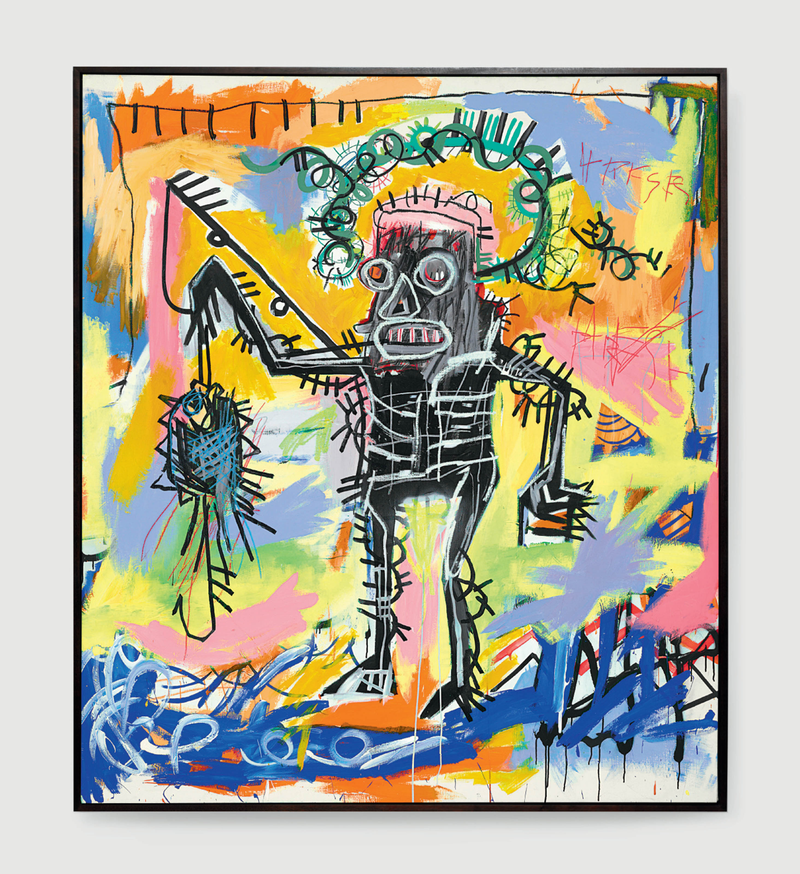
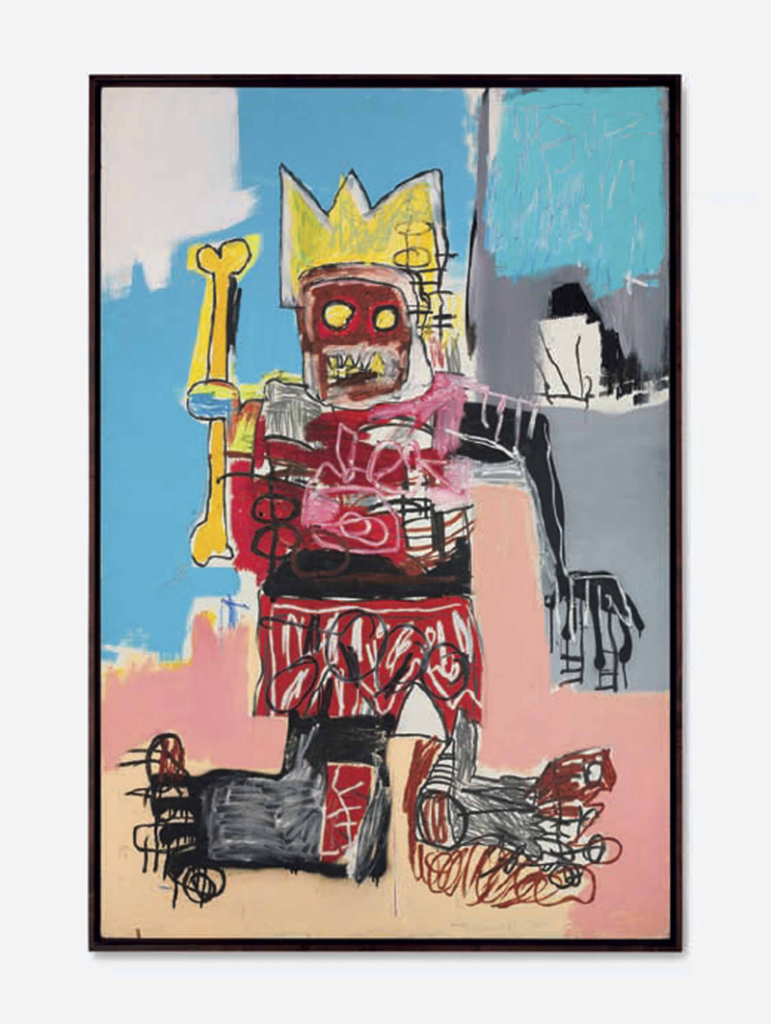
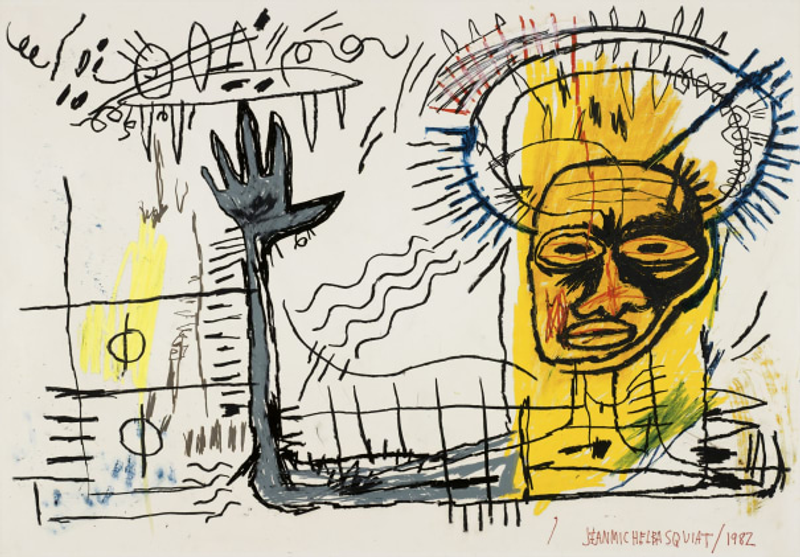
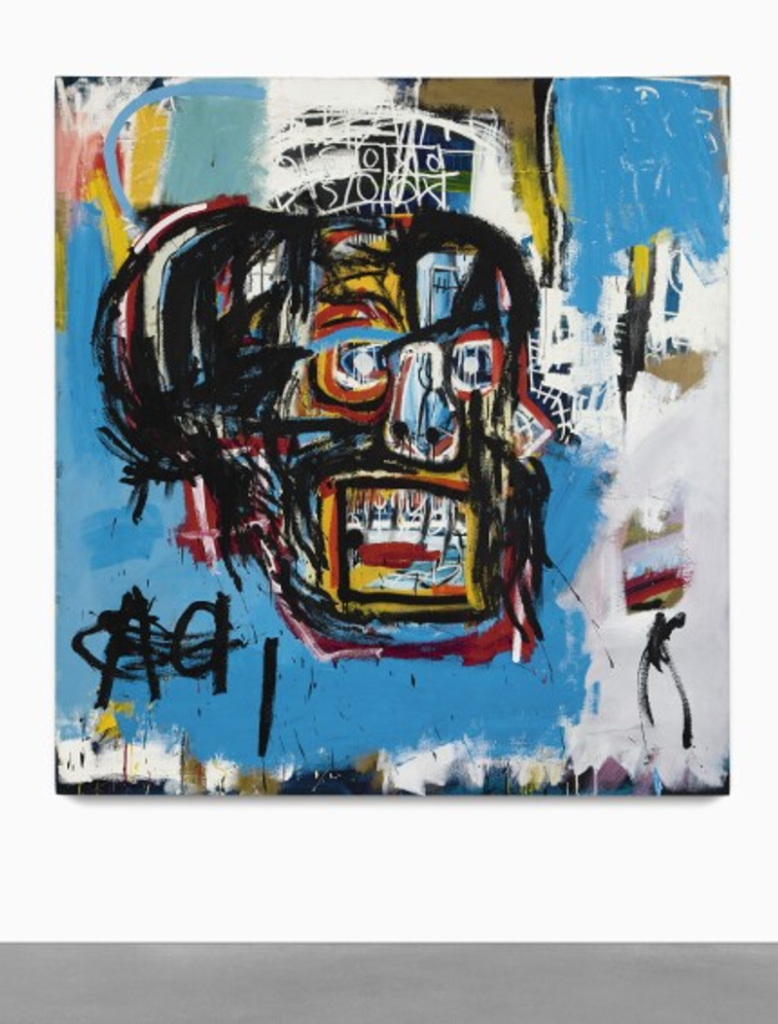
Source:
- https://www.biography.com/artist/jean-michel-basquiat
- https://www.basquiat.com/
- https://www.thebroad.org/art/jean-michel-basquiat


